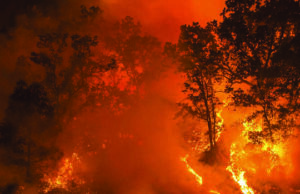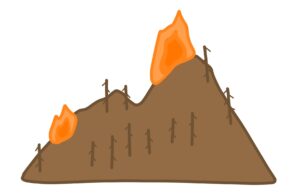Fires burn through Australia
It has dominated the headlines of international news for weeks: ruthless wildfires are ravaging Australia, and has already resulted in 24.7 million acres of land burnt, as well as the deaths of 30 people and millions of animals. Mandatory evacuations have been issued for thousands, and more than 2,500 houses have already been destroyed.
Each of the Australian states has been affected, but New South Wales has taken the most severe damage, with 17.9 million acres of land burnt there alone.
Cities not directly threatened by active flames are still being impacted by the fires; poor air quality is affecting much of the country, as well as New Zealand. In early December 2019, these brushfires left Sydney, Australia engulfed in smoke, with air pollution levels recorded 11 times what is considered a “hazardous level.”
Danilo Alamillo, sophomore, went to Australia, this winter break during the time of the fires. Even though he may have not visited the spots that have been scorched with fire, tension still lingered in the air among less affected parts of Australia. “There was recognition about the fire during our visit… In Glenbrook, they would put up signs such as ‘smoke-free inside’ since the air quality was poor,” Danilo Alamillo said.
In addition to the poor air quality, the effects of the longstanding drought are also contributing to the crisis. Leilani Alamillo, a math teacher at NPHS, went along on the trip with her family. While on a guided tour, the tour guide “talked about the drought they’ve been having, and they can’t wash their cars, they can’t water their lawn,” Leilani Alamillo said.
The drought has been an ongoing issue in Australia for several years. Ella Lewis, junior, spent much of her childhood in Australia, until she moved to California in 2018. During her time spent in Australia, she witnessed the effects of the drought. “There have been years of droughts in Australia before the fires started. Many natives and fire chiefs in the past have warned the government about the risk of climate change and what could happen if we don’t take action and yet this was ignored,” Lewis said.
Lewis was born in the capital of South Australia, Adelaide and which was affected by the Cudlee Creek fire last December. “In my hometown the fire destroyed at least 80 homes, killed one person, destroyed small businesses, and damaged many of the wineries in the area,” Lewis said. “It breaks my heart to see so many people, homes, and animals just devastated by the fires.”
Despite the efforts of the firefighters risking their lives for the residents of Australia, the fire season is still underway. With forecasted temperatures of 100°F and gusts of wind up to 40 mph, the fires are showing no sign of stopping anytime soon, despite the consistent efforts of thousands of firefighters.


